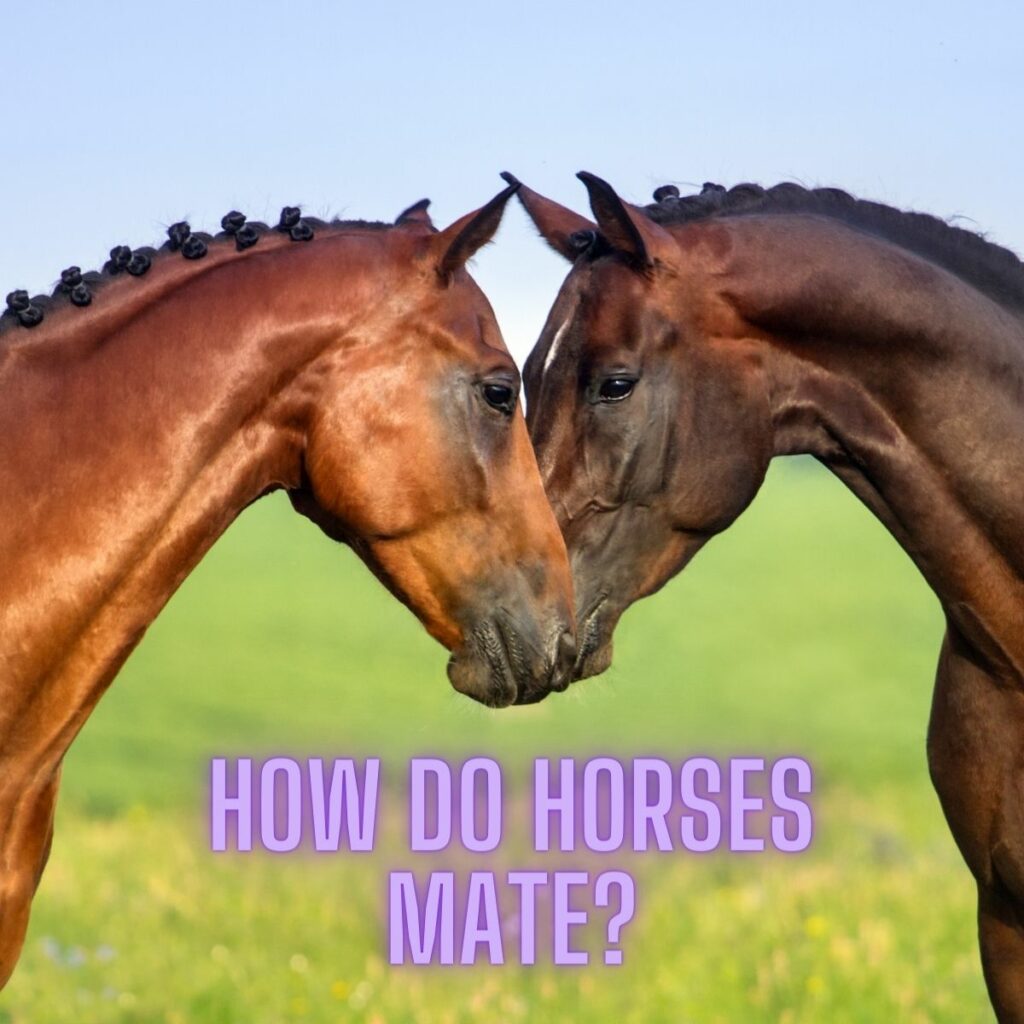As an Amazon Associate we earn from qualifying purchases.
If you’ve ever been curious about the intricacies of horse breeding, you’re in the right place. Understanding how horses mate is not only fascinating but also crucial for those involved in horse breeding or simply looking to expand their knowledge of these magnificent creatures. In this comprehensive guide, we’ll delve into the world of horse reproduction, covering everything from the basics to the more intricate details. So how do horses mate?
The Basics of Horse Reproduction
Before diving into the specifics of how horses mate, let’s start with some fundamental knowledge about horse reproduction.
1. Anatomy of Horses
Horses, like all mammals, have reproductive organs designed for mating and producing offspring. These organs include the testes in males and the ovaries in females. Additionally, both genders have a unique structure called the reproductive tract, which plays a crucial role in the mating process.
2. Estrous Cycle
Mares (female horses) go through an estrous cycle, commonly known as the “heat” cycle. This cycle consists of several stages, including proestrus, estrus, metestrus, and diestrus. Understanding these stages is vital for successful breeding.
The Mating Process
Now that we’ve covered the basics, let’s explore how horses mate.
3. Courtship and Behavior
Horses are social animals, and courtship plays a significant role in their mating process. During the estrus stage of the mare’s cycle, she may display receptive behavior, such as lifting her tail and allowing the stallion to approach.
4. Mounting
Once the mare is receptive, the stallion will attempt to mount her. This is a critical moment in the mating process, as successful mounting is necessary for fertilization to occur.
5. Copulation
Copulation, or the act of mating, involves the stallion penetrating the mare’s vagina with his erect penis. This process can be brief but is essential for transferring sperm to the mare’s reproductive tract.
6. Fertilization
After successful copulation, fertilization can occur. The sperm travel through the mare’s reproductive tract to reach the egg in the ovaries. If fertilization is successful, the mare becomes pregnant.
Factors Affecting Successful Mating
Several factors can influence the success of horse mating.
7. Timing
Timing is crucial in horse breeding. Mares must be in the correct stage of their estrous cycle, and both the mare and stallion should be in good health for optimal chances of successful mating.
8. Health and Nutrition
Both the mare and stallion should be in excellent health and receive proper nutrition to ensure they are fit for breeding. Regular veterinary check-ups are essential to address any health issues.
9. Environment
Creating a suitable environment for mating is vital. Horses should have a comfortable and safe space, free from distractions and potential dangers.
Conclusion
In conclusion, understanding how horses mate is essential for anyone involved in horse breeding or those with a keen interest in equine biology. From the basics of anatomy and the estrous cycle to the intricate details of courtship, mounting, and fertilization, horse mating is a complex yet fascinating process. By considering factors like timing, health, and environment, breeders can increase their chances of successful mating and the birth of healthy foals. So, the next time you observe horses in a field or on a farm, you’ll have a deeper appreciation for the intricacies of their reproductive journey.
Amazon and the Amazon logo are trademarks of Amazon.com, Inc, or its affiliates.

Hey there, I’m Jasmine! I’m a total horse fanatic and have been working with these amazing animals for as long as I can remember. I’m passionate about sharing my love for horses with others and helping them learn more about these majestic creatures. As a professional horse trainer and riding instructor, I’ve developed a deep understanding of equine science and am committed to the welfare of horses. That’s why I founded OwnTheHorse.com, a blog where I share my knowledge and insights with fellow horse enthusiasts. I love connecting with my readers and building a friendly community of horse lovers. Whether you’re a seasoned equestrian or just starting out, I’m here to help and inspire you. Above all, I’m a friendly and compassionate person who truly cares about the well-being of horses and their human companions.

